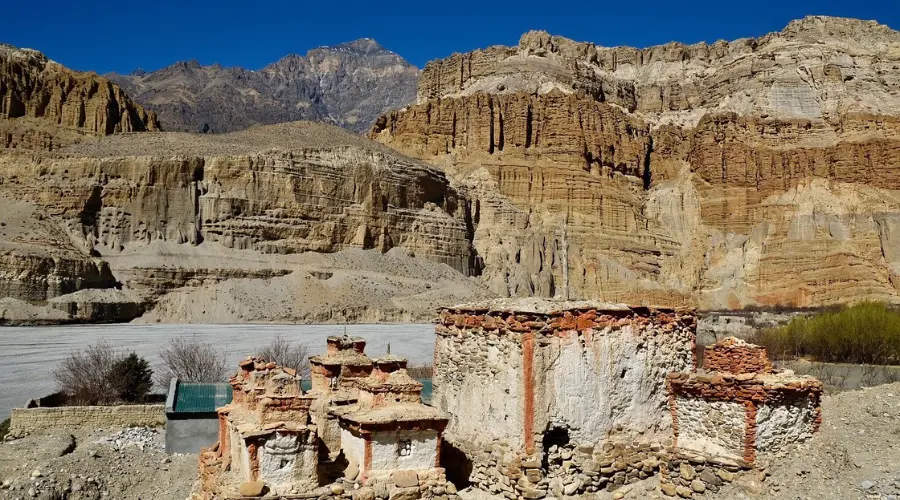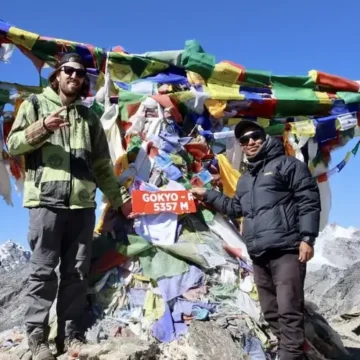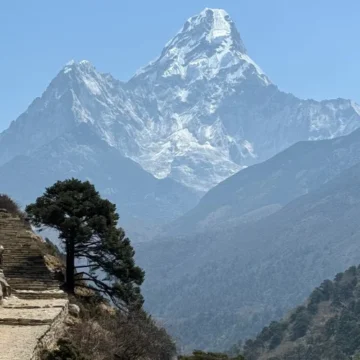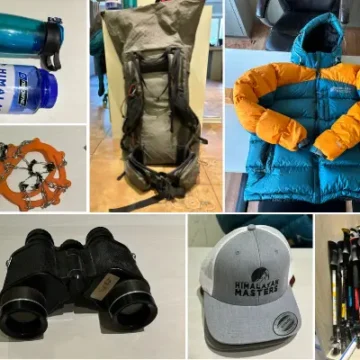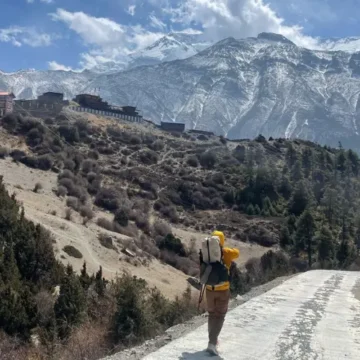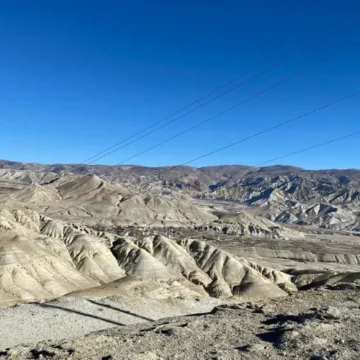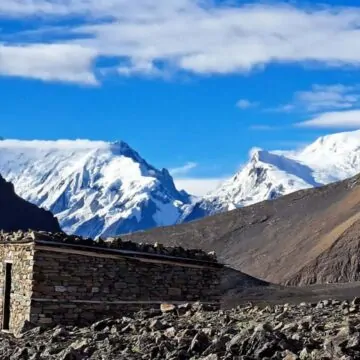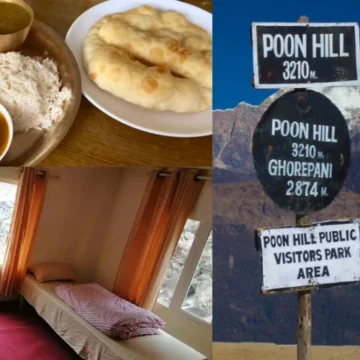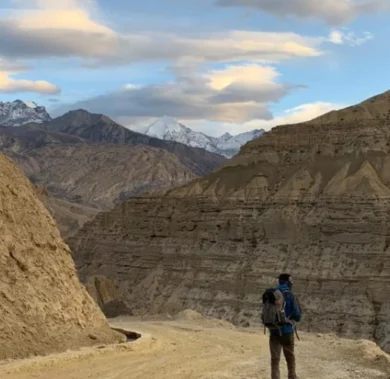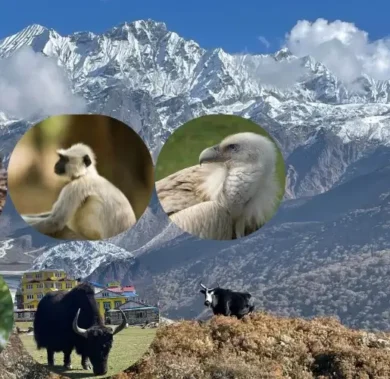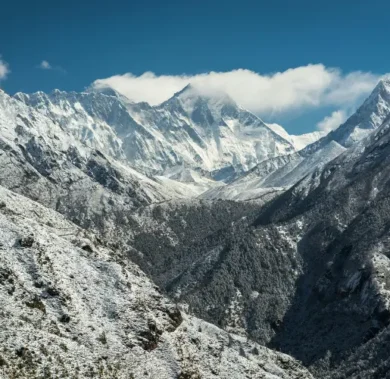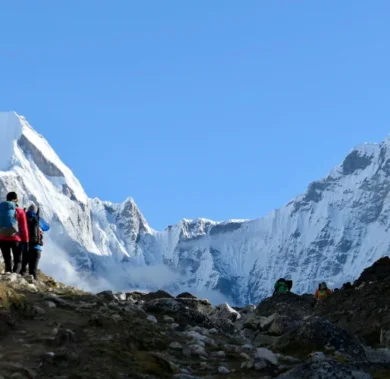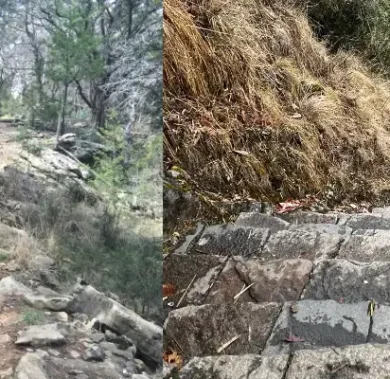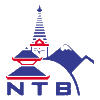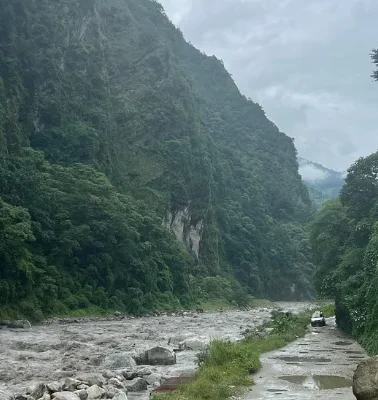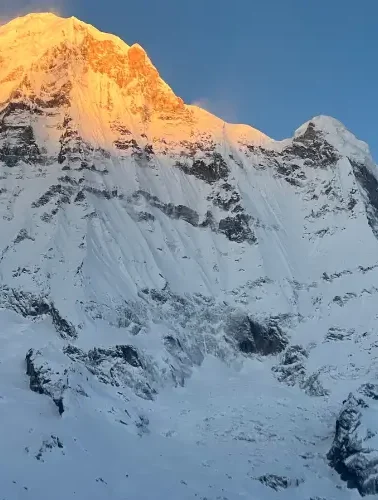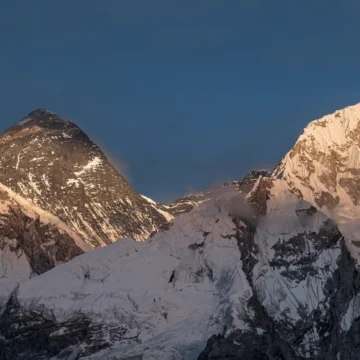
Upper Mustang Trek Height, Weather and Temperature
Table of Contents
Upper Mustang is a unique trekking destination up to the hidden last kingdom of Nepal, where trekkers are rewarded with rich Tibetan culture, ancient caves, and barren, desert-like landscapes. The trek to the closed, walled city of Lo Manthang in Upper Mustang is a perfect blend of adventure and unparalleled trekking experiences. The Upper Mustang Trek height reaches a significant elevation of 4230 meters (13,878 ft) at Marang La.
Upper Mustang is especially known for its rugged landscapes and local Tibetan-influenced villages and their lifestyle. This trek features some of the extreme weather in the Annapurna region, like sunny days, freezing nights, and strong winds.
To tackle these Upper Mustang Trek difficulties, it is essential that you are fully prepared and acclimatize properly. Whether you are trying to acclimate or trying to avoid gusts of wind, understanding the Upper Mustang trek height, weather, and temperature in advance lets you prepare and create some unforgettable memories.
So, let’s see through all the heights from place to place and the weather and temperature conditions in the Upper Mustang Trek.
Upper Mustang Height From Sea Level
Although your Upper Mustang Trek journey starts from Kathmandu (1400 m/4593 ft), actual trekking only starts from Jomsom (2740 m/8989 ft).
The trek starts from an elevation of around 2740 meters and reaches a significant elevation of 4230 meters (13,878 ft) above sea level at Marang (Chogo) La Pass. Besides this, Lo Manthang (3840 m/12,598 ft) is the key highlight of this trek.
While you are struggling a bit and trying to acclimatize, during this trek, you will be mesmerized by breathtaking views of Nilgiri, Dhaulagiri, Annapurna I, etc. Likewise, do not be bewildered to see red cliffs, Jong Cave (a cave carved into the cliff), historic monasteries, and many more.
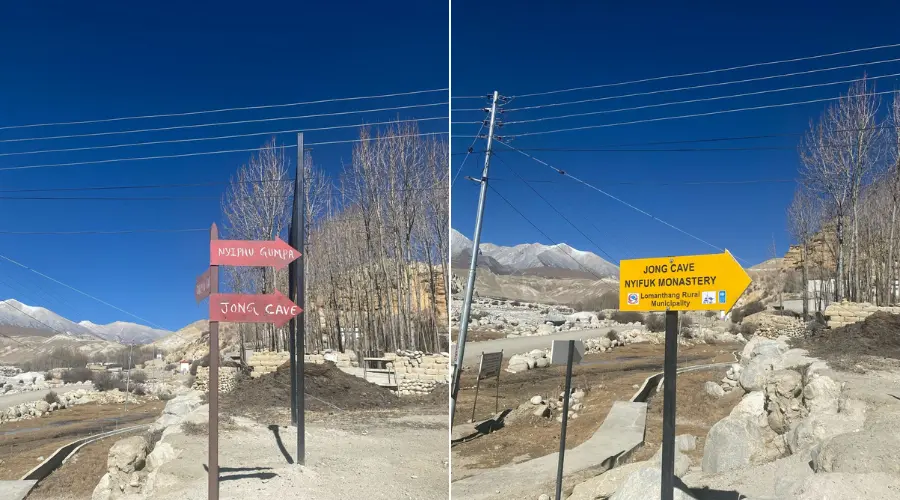
Upper Mustang Trek Height, Weather and Temperature
Each day, the Upper Mustang Trek height changes significantly. And while the weather might remain dry due to the Annapurna region’s rain shadow location, temperature can change drastically between day and night.
So, it is essential that you prepare your packing list for the Trek accordingly. Also, check for acclimatization/rest days in your trek itinerary. This could be vital in determining the success of your trek.
Ok, now let’s dissect the Upper Mustang Trek height, weather and temperature day by day.
Jomsom Height, Weather and Temperature
The starting point of the trek, Jomsom, is a beautiful village en route. Jomsom is located at an elevation of 2740 meters (8989 ft), so this village serves as the first acclimatization stop for trekkers.
The weather around here is usually dry and windy with occasional, light rain.
Similarly, the daytime temperature in Jomsom ranges between 10 and 15°C. Meanwhile, the night temperature can fall below 0°C to -5°C.
Kagbeni Height, Weather and Temperature
Kagbeni is another key village, or, let’s say, the first overnight stay place on our trek. This village is situated at 2800 meters (9186 ft). So, there is only 60 meters (197 ft) altitude gain from Jomsom.
The weather in Kagbeni is almost similar to Jomsom. There is strong wind throughout the year, especially in the afternoon.
The days and nights in Kagbeni are a bit warmer than in Jomsom. Daytime temperature can reach around 18°C on sunny days, while night temperature ranges between 5°C and -2°C.
Chele Height, Weather and Temperature
Carrying on further into the Mustang region, Chele reaches 3100 meters (10,170 ft). The ascent from Kagbeni is about 300 meters (984 ft), and the air thins out, and the walk becomes more challenging.
The climate of Chele is still cold and arid, with harsh winds blowing across the area. The barren terrain results in scattered vegetation, and the air is normally dusty.
Daytime temperatures vary between 10-15°C, but the nights are extremely cold, dropping between -5°C and 0°C.
Syangbochem Height, Weather and Temperature
At an altitude of 3800 meters (12,467 ft), Syangbochem has a tremendous altitude gain of 700 meters (2297 ft) from Chele. This kind of elevation makes the trek more challenging, with required acclimatization.
The climate in Syangbochem is more extreme with rising altitude. The air is thinner, and strong winds blow through the valley, making it feel colder than it actually is.
During the day, temperatures remain between 5-12°C, while nighttime temperatures drop to as low as -8°C to -2°C.
Ghami/Ghemi Height, Weather and Temperature
As one of the oldest settlements in Upper Mustang, Ghami is located at 3510 meters (11,515 ft). Compared to Syangbochem, there is an altitude loss of approximately 290 meters (951 ft).
The weather in Ghami is dry and windy for most of the year. Being part of the trans-Himalayan region, the village experiences intense sunlight during the day but extreme cold at night.
Daytime temperatures range between 7-14°C, while nighttime temperatures can drop between -7°C and -1°C.
Charang/Tsarang Height, Weather and Temperature
Positioned at 3560 meters (11,679 ft), Charang sees a slight altitude gain of 50 meters (164 ft) from Ghami. This village is a significant cultural hub in Upper Mustang.
The weather here is similar to that of other villages in Mustang. Winds are strong, and the sun is intense due to the high altitude. The dry climate makes the air crisp and cold.
Daytime temperatures usually remain between 6-12°C, while nighttime temperatures drop between -6°C and -1°C.
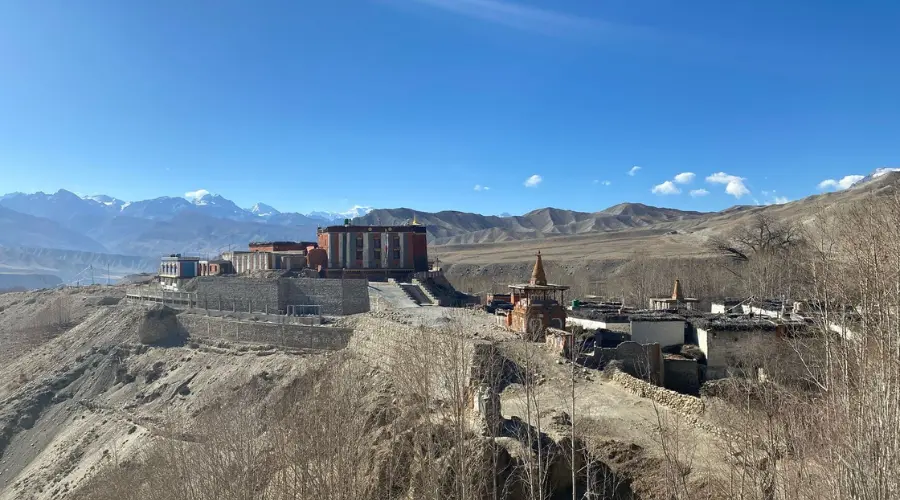
Lo Manthang Height, Weather and Temperature
The capital of Upper Mustang, Lo Manthang, stands at 3840 meters (12,598 ft). There is an altitude gain of 280 meters (919 ft) from Charang, making the air noticeably thinner.
Being at one of the highest points in the region, Lo Manthang experiences harsh weather conditions. Winds are strong, and the air is thin, making it feel much colder than the actual temperature.
During the daytime, temperatures range from 5-10°C, while nights can get extremely cold, dropping to -8°C to -3°C.
Dhakmar Height, Weather and Temperature
Further along the trek, Dhakmar is located at 3820 meters (12,533 ft). The altitude is just 20 meters (66 ft) lower than Lo Manthang, making the terrain and conditions quite similar.
The weather in Dhakmar is dry and cold, with strong winds throughout the day. The landscape is rugged, and the air is thinner, making trekking more challenging.
Daytime temperatures range from 6-12°C, while nighttime temperatures drop between -7°C and -2°C.

Chhusang Height, Weather and Temperature
After descending from the higher-altitude regions of Dhakmar via Syangbochem, Chhusang sits at 2980 meters (9777 ft). Compared to Dhakmar, this marks a drop of 840 meters (2755 ft), making breathing easier. Compared to Syangbochem, which is also a night stay place while returning from Dhakmar, the elevation loss is just 20 meters (66 ft).
The weather in Chhusang is milder than in higher-altitude locations. Winds are still present but less intense, and temperatures are slightly warmer.
During the day, temperatures can reach between 10-17°C, while nights can be cold, ranging from -4°C to 2°C.
Muktinath Height, Weather and Temperature
Famous as a sacred pilgrimage site, Muktinath is located at 3760 meters (12,336 ft). The altitude here is almost the same as Lo Manthang, with only a 60-meter (197 ft) difference. However, when compared to the elevation of the previous overnight stay at Chhusang, the elevation gain is significant, i.e. 780 meters (2559 ft).
Muktinath experiences harsh weather conditions similar to those of other high-altitude regions. Winds are strong, and temperatures drop rapidly after sunset.
Daytime temperatures range between 7 and 15°C, while nights can be freezing, dropping to -8°C to -3°C.
Challenges on Upper Mustang Trek due to Height, Weather and Temperature
The challenging altitude and harsh weather conditions make Upper Mustang a demanding trek. However, it is an easy trek if you are prepared and plan accordingly.
Challenges Due to Height
- Above 2500 meters (8200 ft), there is a constant risk of altitude sickness, especially if you ascend rapidly.
- There are several steep climbs and descents in several sections. One of the most challenging sections is the Morang La Pass.
- Lower oxygen levels affect stamina and breathing.
Challenges Due to Weather and Temperature
- Strong winds throughout the region, especially in the afternoon.
- It’s difficult to predict the weather, especially at higher elevations.
- The rain shadow region means cold and dry conditions.
- Harsh winters cause local migration and trail closures, and sometimes prohibition in crossing passes.
- High sun exposure leads to dehydration and sunburn.
- There is a constant risk of hypothermia and frostbite at higher elevations.
Tips to Overcome Upper Mustang Trek Challenges
Here are some tips that you can follow to overcome challenges due to Upper Mustang Trek height, weather and temperature.
- Acclimatize properly, and let your body recover from depleting oxygen levels at higher elevations.
- Drink at least 3 litres of water daily, and make sure it is purified using water purification tablets or filtration tubes.
- Avoid alcoholic products, which can cause dehydration.
- Pack proper trekking gear according to the season you are trekking, including windproof, waterproof and warm clothes.
- Use sunscreen, sunglasses, a sun hat, and long-sleeved shirts and pants to protect from sunburn.
- Check the weather forecast and stay in touch with your trekking agency.
- Ascend slowly and listen to your guide at all times.
- Be physically and mentally prepared for any kind of trek height, weather and temperature conditions.
- Do not forget to carry essential documents and permits for Upper Mustang Trek, especially the Upper Mustang trek Restricted Area Permit (RAP), Annapurna Conservation Area Permit (ACAP), and passport.
Want to know more?
Speak to an Expert





Sandip Dhungana
Nepal 🇳🇵
Whatsapp: +977-9823636377

